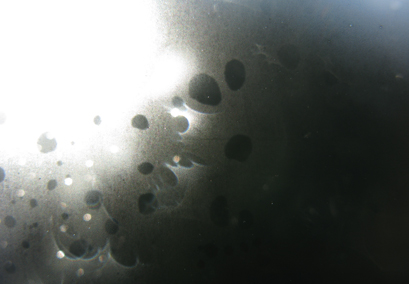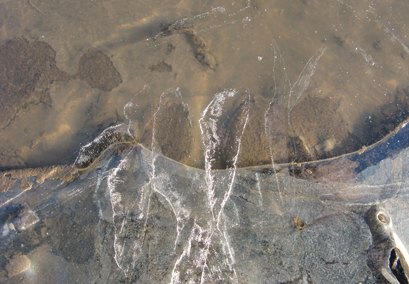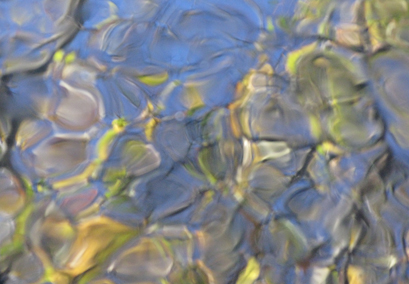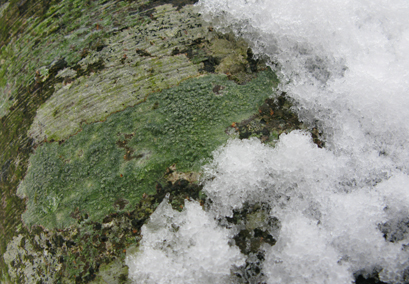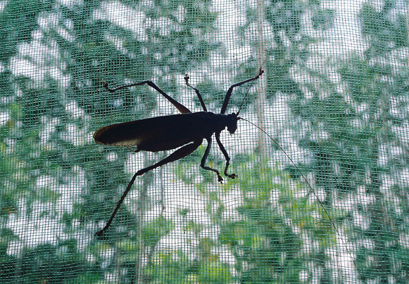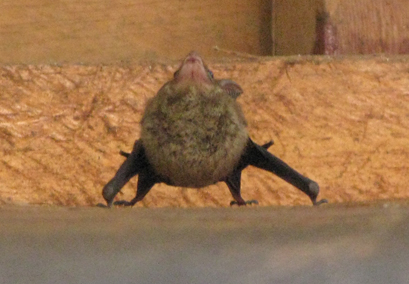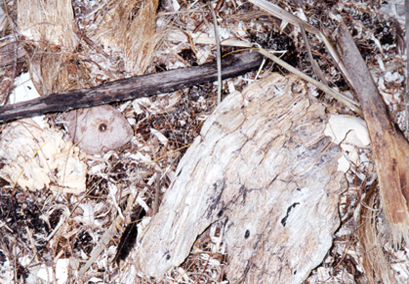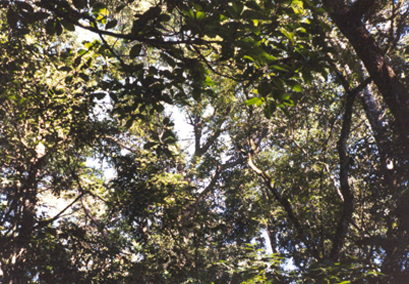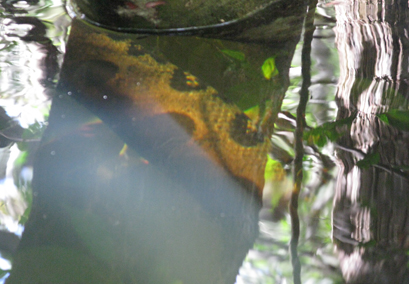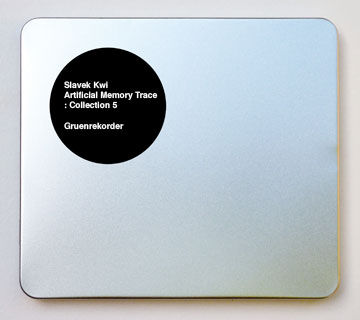
COLLECTION 5 | SLAVEK KWI / ARTIFICIAL MEMORY TRACE
Gr 080 | Gruen CD-R | Silver > [Sold Out]
MP3 & FLAC > [order]
TRACK 1_18
TRACK 19
TRACK 20_31
TRACK 32
32 Tracks (79′54″)
CD-R (50 copies)
NOTES:
BLACK-AND-WHITE COLOBUS MONKEYS, REC. KAKAMEGA, KENYA, AFRICA
HOWLER MONKEYS, REC. XIXUAU XIPARINA, AMAZONAS, BRAZIL, SOUTH AMERICA
ALL PARTICLES OF REALITY RECORDED AND CREATED BY SLAVEK KWI IN VARIOUS DIMENSIONS OF TIME-LIKE-SPACE.
NO ADDITIONAL INFORMATION IS AVAILABLE WITH THIS EDITION.
PERCEPTION. NO COGNITION. LISTEN.
MP3
AUDIO-SIGNATURE
SOUNDSCAPE SERIES BY GRUENREKORDER
GRUENREKORDER / GERMANY / 2011 / GR 080 / LC 09488
Chris Whitehead | The Field Reporter
ALL PARTICLES OF REALITY RECORDED AND CREATED BY SLAVEK KWI IN VARIOUS DIMENSIONS OF TIME-LIKE-SPACE.
NO ADDITIONAL INFORMATION IS AVAILABLE WITH THIS EDITION.
PERCEPTION. NO COGNITION. LISTEN.
We are led to believe that these instructions are the only information provided with this release. Except of course they aren’t. There are several pictures on the Greunrekorder website showing leaf litter, insects, animals etc. suggesting the sources of some of the sounds. In addition there are two tracks playable directly from the site by way of a taster entitled ‘BLACK-AND-WHITE COLOBUS MONKEYS, REC. KAKAMEGA, KENYA, AFRICA’ and ‘HOWLER MONKEYS, REC. XIXUAU XIPARINA, AMAZONAS, BRAZIL, SOUTH AMERICA’. I’d say that is quite a lot of information, and it would be hard to listen to those tracks without cognition or perception.
Also we’re given the name of the composer. We know of the work he has produced in the past, we can read his biographical details and discover that he works with autistic and disabled children, largely engaging them with sound.
Essentially the first eighteen short tracks of this 80 minute collection are delicate and metallic electronic miniatures whose connection to their original sound sources has been all but severed. Reading some reviewers’ attitudes to this you could be forgiven for thinking a great act of sacrilege has taken place. Slavek Kwi has made his intentions clear in the few words of text printed at the top of this review. This isn’t a piece where the idea is to try and guess where the sounds come from. It is to treat the sounds as entities divorced from the material world.
It is true that there is no momentum or narrative to the work as a whole, but each track has many points of interest and things do develop within tight limits. It requires a different mindset to a 30 minute long unprocessed recording of a Bolivian railway station or an English wood in autumn. To a certain extent this is probably at the outer limit of what can rightly be reviewed in The Field Reporter, as it largely and intentionally obliterates field recording.
As a hypothetical experiment take a painting, for example Rene Magritte’s ‘Ceci n’est pas une pipe’. Wash all the paint from the canvas and collect it in a jar. Then display the jar of paint in the gallery claiming it is Magritte’s ‘Cesi n’est pas une pipe’.
In a sense it is, it has all the elements of color, everything that made up the image on display. But then again, it isn’t. The form is radically different and there is no longer any perception of a pipe, which is after all the whole point of the painting.
To be fair as this collection of tracks progresses bird and animal sounds become evident. I would hazard a guess that tracks 20 to 32 were recorded in rain forests, but then again there I go. Doing exactly what the composer has explicitly warned against, trying to fit sounds to places, habitats, situations, objects and images.
Because of our real life experiences and our propensity to try to make sense of things, listening without cognition is incredibly difficult. One has to consciously strive to do it as it doesn’t seem to be the default position of the human mind.
A very interesting release, but probably not for the field recording purist. It certainly raises questions and plays with ideas. If it was necessary to categorize this Artificial Memory Trace release I would place it firmly in the abstract electronica enclave, because the fact that it was made from field recordings seems subservient.
To truly make a pure piece of absolute sound recording the artist would have to remain unnamed. The piece would have to be untitled. No images would accompany it and no words would offer context. It would not be sold to people who have an interst in experimental music, but sent out at random to members of the public or given out in shopping centres.
I think we spend a lot of time fooling ourselves.
maeror3 | maeror3.livejournal
«Воспринимайте. Не старайтесь распознать. Слушайте». Так призывает небезызвестный любителям экспериментальной музыки Славек Кви отнестись к его новому альбому, который он подготовил специально для серии «Collection» немецкого лейбла «Gruenrekorder», ориентированной на издание полевых записей и «конкретной» музыки. Собрав множество разнообразных звуков природы и человеческой деятельности, музыкант не просто свел их воедино – его больше занимала частичная или полная трансформация исходного материала. Фиксирование определенного места-момента совершенно не интересует музыканта, «звуковой фотографии» он предпочел создание полностью индивидуального пространства со своими уникальными характеристиками. Стоит сразу отметить, что это ему удалось. И пусть описать получившийся итог, разделенный на тридцать два коротких и не очень трека, без нарушения строгих предписаний самого автора довольно трудно, попытаюсь это сделать.
Прежде всего, звуки этого альбома редко когда приближаются к слушателю вплотную. Они все время где-то в отдалении, именно так бывает, когда в лесной чаще пытаешься отыскать местонахождение того или иного звука, а его источник все время оказывается не там, где ты думаешь. Атмосфера «Collection 5», сотканная из этих бесконечных отголосков, отражений, эха, перевернутых и доведенных до неописуемого состояния фрагментов, бывших когда-то вполне привычными вещами, как раз больше всего напоминает прогулку по рассветному лесу, когда все звуки доносятся сквозь туман. Можно назвать созданную Кви музыку «скрытой», ее вибрации зачастую чувствуешь сначала телом, и только потом слышишь. Хотя, добредя по лесным тропинкам до середины альбома, можно уловить также нервные и уже более осязаемые скрежещущие ритмы, созданные при помощи железных предметов, осыпающие ржавчиной шорохи и даже звуки ремонта с обязательной дрелью и молотком – впрочем, все это мелькает резкими и быстрыми вспышками, и быстро исчезает, оставляя незамысловатые, но притягательные и не меркнущие миражи, за созерцанием которых время летит совершенно незаметно. Субъективно «Collection 5» от «Artificial Memory Trace» можно назвать одной из самых интересных работ в жанре «field recordings» за последнее время, хотя и чуть отошедшей от идеалов и задач многих последователей стиля. Славек не ловит момент – он создает его. Отличная работа для тонких ценителей и тех, кто хочет услышать, как еще может звучать этот мир.
Ron Schepper | textura
Collection 5 is a rather enigmatic recording, even by Gruenrekorder standards. It’s the latest in an ongoing series of field recordings-based releases from the label, each one of which arrives in a silver case accompanied by a modicum of information. This particular one is the brainchild of sound artist Slavek Kwi, who was born in Czechoslovakia (as it was then known) and since 2000 has been based in Ireland, and has operated under the name Artificial Memory Trace since the early ‘90s and issued a dozen albums. Part of his current work involves experimental sound workshops with autistic children and those with learning disabilities.
The liner notes of Collection 5 reveal that “(a)ll particles of reality [were] recorded and created by Slavek Kwi in various dimensions of time-like-space” and that no additional information—aside from the words “Perception. No cognition. Listen.”—is available for the edition. Not surprisingly, then, Kwi’s primary focus is upon perceptual phenomena and how it determines one’s experience of reality; he also seemingly encourages the listener to experience the material as pure sound rather than get bogged down in over-analyzing it and sussing out its origins. The recording itself is an embarrassment of riches in sonic terms, with Kwi integrating into its eighty-minute running time all manner of sound, be it animal-, machine-, and/or human-generated. Though it’s occasionally challenging to identify the sounds, there’s little doubt Kwi’s drawn upon a multitude of sonic phenomena (much of it derived from site-specific recordings) for the recording’s thirty-two untitled tracks, twenty-one of which are under the three-minute mark. Glitchy electronic noises, door slams, monkey howls, electric saws, buzzing insects, bird caws, amazon rain forest chatter, and a cornucopia of other sounds are stitched together into an endlessly mutating electro-acoustic sound-painting that’s travelogue-like yet also fairly regulated, making for a ride that’s admittedly long and obviously scenic but also generally smooth. In this case, the ideal listeners would be those who prefer their collages parked midway between determinacy and indeterminacy.
Richard Pinnell | The Watchful Ear
Back to reality with a thump then. Ah well. While my body clock tries to work out what day it is, I have managed to do some listening since I got home from work, my first really focussed concentration on music in almost a week, and well, to be honest I wish I could have picked a better CD to have returned to, but once I put this disc in the player I stuck with it. The CD is a release on Gruenrekorder named Collection 5, credited to Slavek Kwi – Artificial Memory Trace.
The notes accompanying this release read as follows; “All particles of reality rcorded and created by Slavek Kwi in various dimensions of time-like space – No additional information is available with this edition – Perception. No Cognition. Listen.” Now, forgive me if I’m speaking out of line here, but as liner notes go, they are pretty terrible. I’m not sure what time-like space is, but it seems that Kwi has collected a number of field recordings that he has processed quite heavily and compiled into thirty-two very brief tracks, and he would like us to approach the music without considering its origins or content and instead just listen to it. OK, fair enough, but for me the most interesting aspect of this music is trying to work out what the original sound sources were. Otherwise its really not that great. Or at least that’s my perception.
First of all (and to be fair I am making a complaint here that could be applied to quite a few CDs, but since I’m in a critical mood…) this is one long, flowing piece of music, so why has it been divided up into four sections, with the second and fourth sections apparently only containing one track each (tracks 19 and 32) while the first apparently contains tracks 01-18 and the third tracks 20-31. Maybe there is an important point to this apparent over-complication of matters, but when the music all forms one long work did it need dividing up into tiny parts?
Anyway, the sounds we hear are mostly all unidentifiable following the heavy degree to which they have been submitted to a slew of digital processes. The treatments I am afraid to say aren’t all that inspiring either (are they ever? – there’s a question…). For the most part it just sounds like the field recordings have been fed through different patches that flatten the sound or apply a kind of futuristic metallic sheen. There is a kind of sci-fi feel to it all. At one point a sound appears that reminds me a lot of the incredible pedestrian crossing sounds heard in Dublin, but overall much of what we hear resembles something between the various settings on a child’s toy laser gun and a kind of bland ambient wash. Every now and again little glimpses of the original recordings seep through the artificial surface, and so we hear an electric drill, a whimpering dog, various birds (seagulls seem to appear a lot) and other bits and pieces that feel familiar, and these elements are by far the most successful, perhaps only in contrast to the shimmering clouds that mask them.
Overall the CD lacks any sense of overriding structure and/or dramatic progression. The liquidisation of the source material, coupled with the loose, seemingly directionless feel to the album combine to produce a CD that (very rarely for me) I struggle to find anything positive to say about. The way the music is presented to us probably doesn’t help. I’m not thinking so much about Gruenrekorder’s functionally simple silver tin packaging here as much as I am the seemingly pretentious sleevenotes, but even without reading these (which was the case on my first play of the album) this music didn’t inspire much in me.
Maybe the most negative review I’ve ever written then. I’d be very interested to hear from anyone that has heard this release and found it enjoyable, as clearly, given the number of CDs that Slavek Kwi has made over the past thirty years he must have a considerable audience, so it would be good to understand better what I am missing.
Frans de Waard | VITAL WEEKLY
‚No additional information is available with this edition‘ it says on the cover of this release, other then ‚all particles of reality recorded and created by Slawek Kwi in various dimensions of time-like-space‘. Slawek Kwi, we know, is Artificial Memory Trace, one of the more interesting modern day musique concrete composers, and who still sticks with his pseudonym (like Toy Bizarre). From the Czech Republic to Belgium to Ireland, where I believe he still is. He may not be the most active one, when it comes to releases, but his out put is always interesting. The cover is indicates a few more things. It seems that ‚Track 01-18‘, ‚Track 19‘, ‚Track 20-31‘ and ‚Track 32‘ make up four tracks, split into thirty-two tracks. The other thing is that its part of the field recording series, so no doubt the majority of the music uses field recordings. Majority I’d say, as there is an occasional instrument to be heard here and there. I found it hard to say wether these pieces belonged together, say track 1-18, or track 20-31. When you assume there is a logical stop in a track, it may be half way through and not right at the end. Maybe the whole idea is to shuffle these tracks. As said, lots of field recordings here with interesting forms of transformation. „Perception. No Cognition. Listen.“ it says on the cover and that’s perhaps indeed all there is.
Brian Olewnick | Just outside
You know, when you inscribe a release with the admonition: „Perception. No cognition. Listen.“, you better deliver. Instead, Kwi presents a lengthy (80 minute), meandering set involving electronics and field recordings that’s woozy throughout, sometimes sounding like a not particularly rigorous Sun Ra episode, other times recalling some of Reich’s experiments with taped sounds („Different Trains“, say), still other occasions just spinning his wheels. It unravels without a logic or reason for being that I could discern, just wave after wave of sounds spliced together more for surface effect than anything else. All tumult, little respect for space, kind of like a Georges Matthieu approach to soundscaping…Listening without cognition yields little; with cognition, still not so much.

